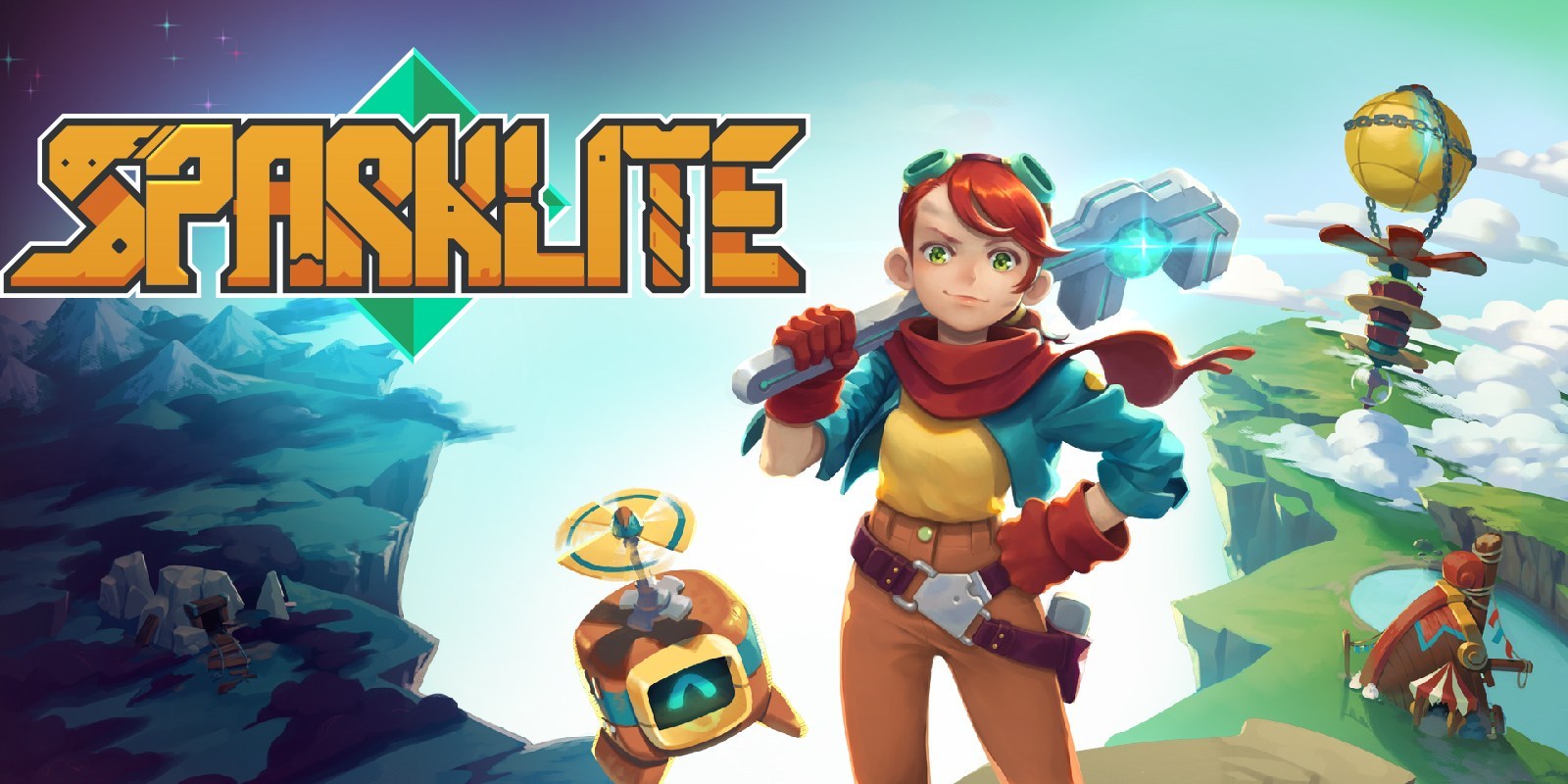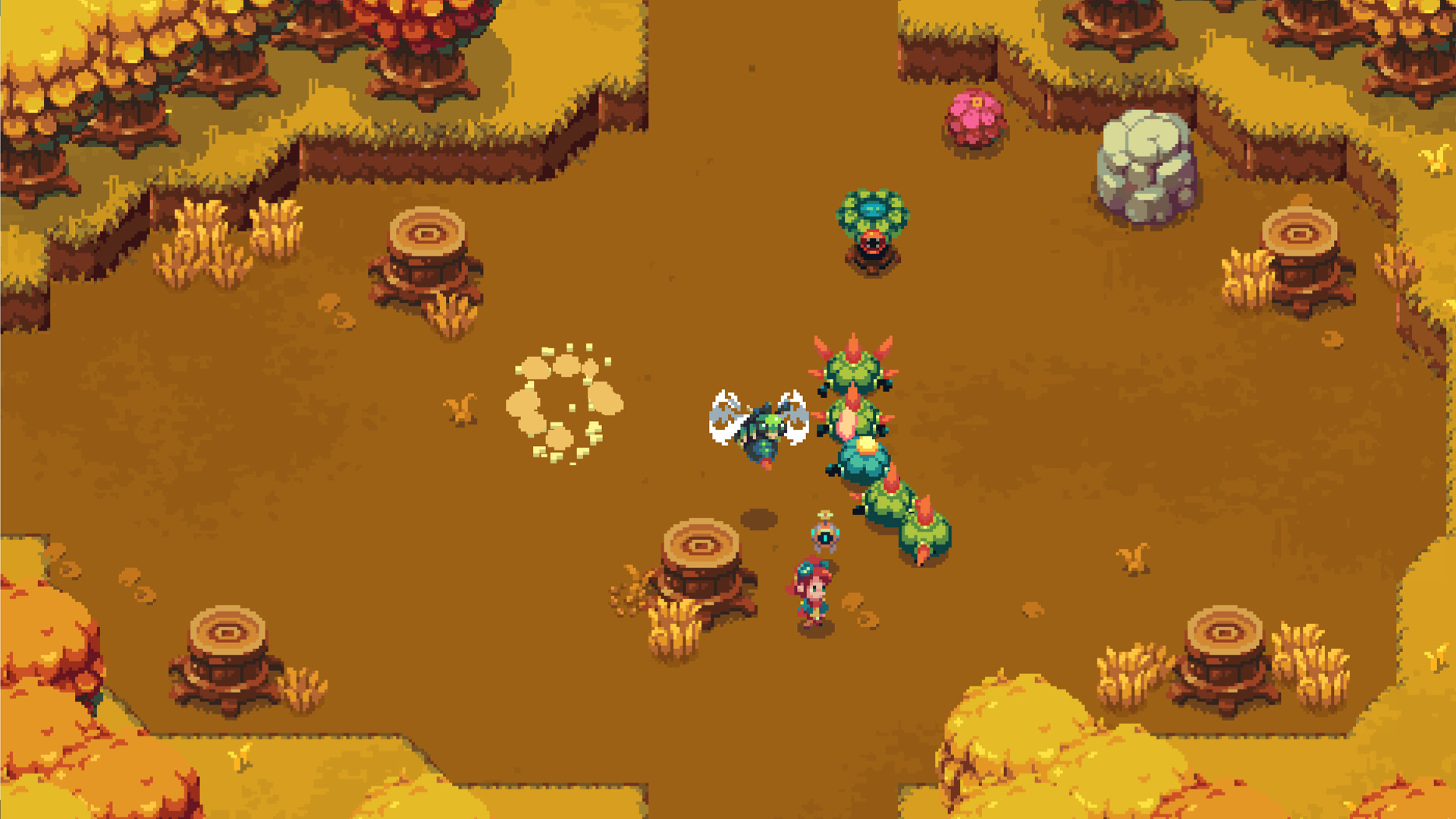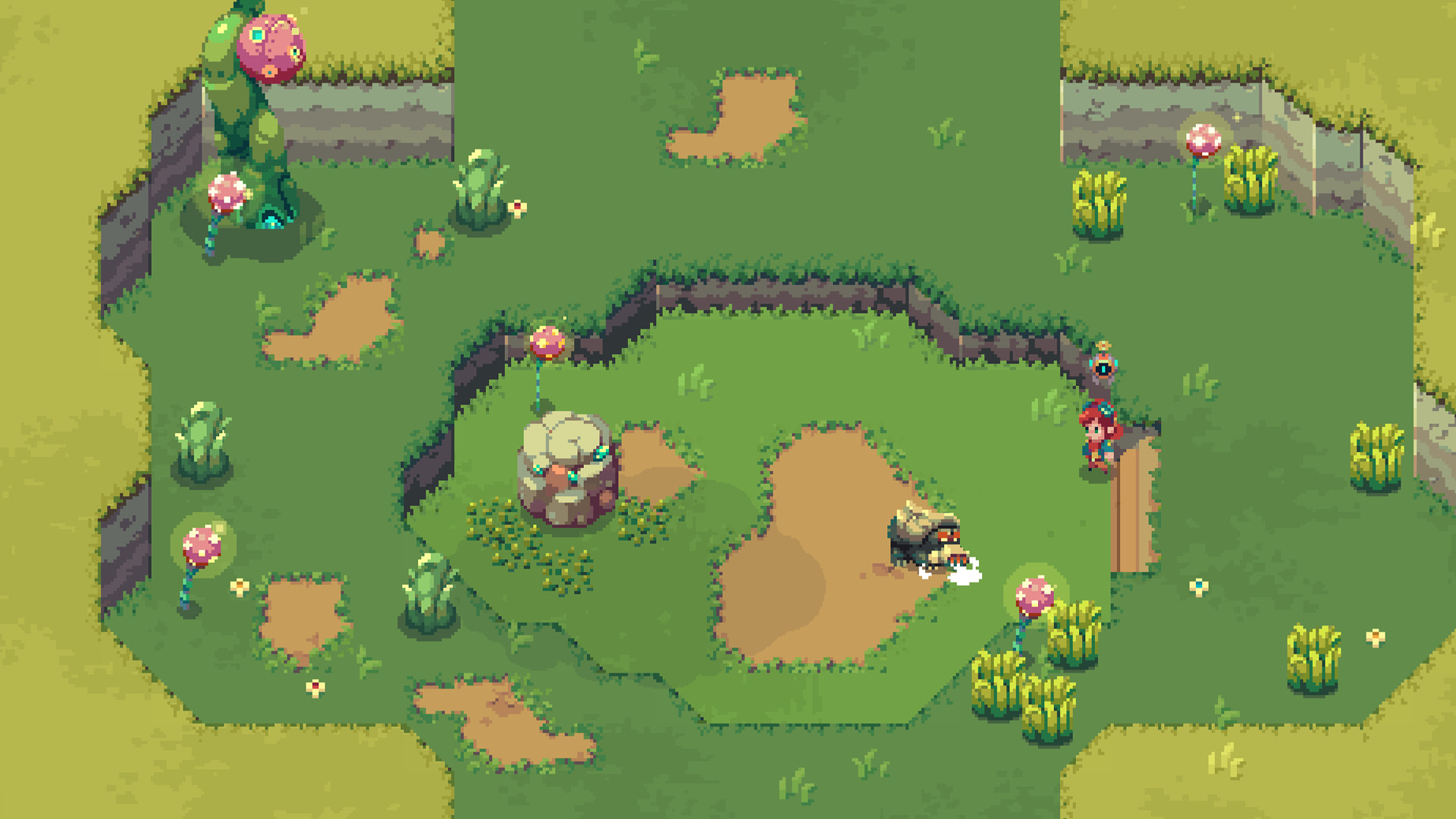Sometimes I feel like my tastes in video games don’t even make sense to my mind. On the one hand, I absolutely love The Legend of Zelda, but most imitations are off-putting. I love pixel art games but typically don’t spend much time with roguelikes or roguelites. That’s because I find them too repetitive or lacking in variety, especially if they’re procedurally generated, though there are some exceptions.
Sparklite from developer Red Blue Games and publisher Merge Games is one of those exceptions. It just doesn’t feel like your traditional roguelite experience.
Sparklite Review: Legend of Roguelikes
In Sparklite you play as Ada, an engineer-type heroine with a trusty wrench and robot that’s crash-landed on a strange world powered by mysteriously magical objects called sparklite.
The big bad Baron is pillaging and mining the world to harvest and consume the energy for himself. In contrast, the inhabitants co-exist with the world and leverage its properties to power gadgets and cities. All of the Baron’s ravaging has left the world unstable and every so often (read: when you are incapacitated and returned to base) the world shifts.
This means that the actual overworld itself is rearranged entirely. Just like any roguelike with randomization, these areas are split into chunks. Consequently, it’s not a truly random setup, but rather more akin to changing the order and layout of the pieces. Everything is very consistent, though, so it feels a bit like a never-ending top-down Zelda game since the overworld is different, but similar, each time. It’s like entering Hyrule Field for the first time over and over again.
When you complete significant milestones, though, like defeating one of the bosses, the location is saved on your map even after it moves.
Back at base, you can deploy upgrades in the form of patches that are sewn onto your gear. This includes things like expanding your pool of hearts for more life, upgrading your energy, improving attack power, increasing defense, and so on. Some patches even enhance your map with new icons, as well.
Once the world resets, you can’t just look at the map and clearly see how to get somewhere. Although the landmarks will still be visible for whichever quadrant they’re in, allowing you can get a general idea of the right path to take, things are covered in a fog, similar to a cloud of war in strategy games.
Pixel Perfect
Visually, Sparklite is exquisite. The pixel art aesthetic fits the tone and gameplay perfectly, and it’s got an appropriately retro-style soundtrack to go along with it. Enemy designs are bright and colorfully animated across distinct regions and various underground dungeons.
If you played Moonlighter or have ever seen a top-down Zelda game in action, then Sparklite will be immediately familiar. You run around, attack enemies with a melee weapon, unlock and purchase extra gear and weapons gradually throughout the game, and fight fierce boss enemies at the end of levels. It’s the same formula here, but with a creative roguelike twist layered on top.
However, some of what makes Zelda so delightful is lost in translation. For starters, the gameplay is a bit less precise — especially for ranged weapon aiming and dodge rolling — plus, there isn’t much of a story in Sparklite other than the overall framing of events. Characters don’t speak much, and the plot points are all pretty shallow.
All told you could start fresh and reach the final boss in Sparklite in a matter of just a few hours, but beating it is another story. The final battle is much more difficult than the prior bosses and will likely result in needing to grind for sparklite so you can upgrade your gear and stats with better patches while stocking up on gadgets. But if you take your time and don’t rush, it all evens out as a more balanced affair.
Sparklite is full of nooks and crannies begging to be explored so, even though I don’t want to tell you how to play a game, per se, it would be a bad idea to try and speed through this one. Exploring the shrines, finding hidden NPCs and collectibles, and upgrading the facilities back at the main base really open up the game’s hidden variety and extra layers.
Sparklite Review — The Bottom Line
Pros:
- Fantastic pixel art graphics
- Snappy gameplay that expands over time
- Clever overworld shuffling mechanic
- Good enemy and gadget variety
Cons:
- Controls feel a little floaty sometimes
- Lackluster story
- Eventually starts to feel repetitive
Sparklite doesn’t try to hide what it is and immediately draws you in from the very start. It’s a tightly-crafted, well-designed, and snappy top-down adventure game that shuffles just enough around to keep things fresh even after a dozen hours of play. And if you’re still not sold on the idea, go ahead and download the demo from Steam and try it for yourself first — free of charge.
[Note: Merge Games provided a digital copy of Sparklite on Steam for the purpose of this review.]









Published: Nov 14, 2019 05:20 am